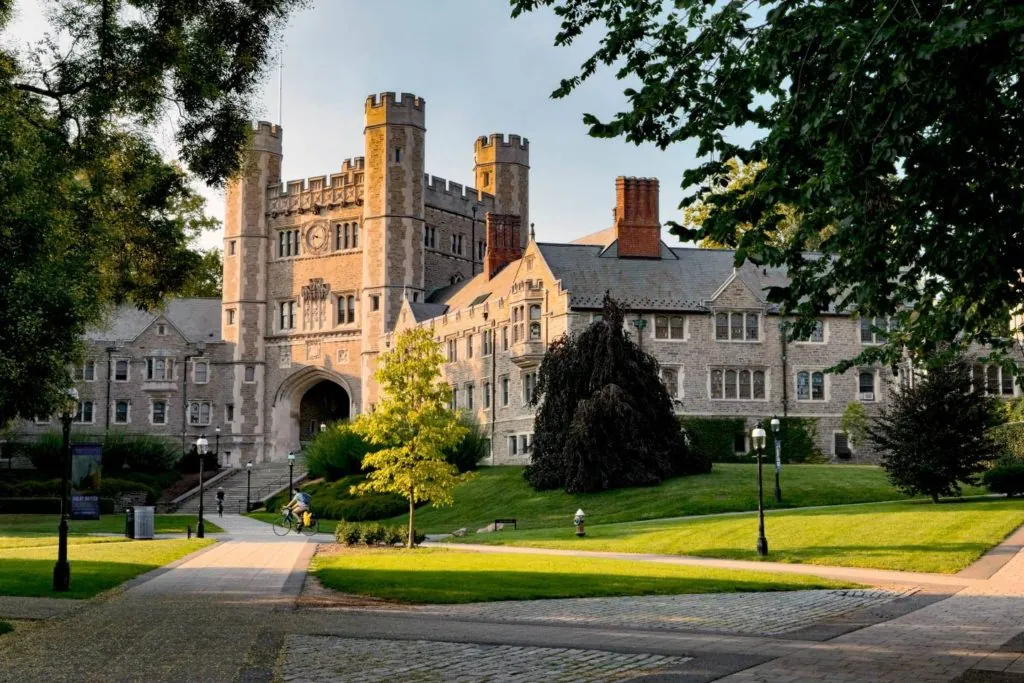
This year, the annual U.S. News Best Colleges rankings underwent significant methodological changes, reshaping the landscape of higher education evaluations. The adjustments included the elimination of five longstanding factors and the introduction of several new criteria. These changes have led to notable year-over-year position shifts, particularly among schools in the middle tier. However, the top-ranked institutions largely maintained their positions from the previous year.
Survey Participation
Despite some opposition to college rankings, the vast majority of institutions surveyed by U.S. News continued to provide data. Approximately 80% of the nearly 1,500 ranked schools submitted their statistical information in the spring and summer of 2023, compared to about 84% the previous year. Notably, this included 99 of the top 100 ranked National Universities and 97 of the top 100 National Liberal Arts Colleges.
Top-Ranked Schools
Let’s begin by examining the top-ranked schools in their respective categories in the 2024 Best Colleges rankings.
**National Universities:**
1. Princeton University in New Jersey (No. 1)
2. Massachusetts Institute of Technology (No. 2)
3. Harvard University in Massachusetts (No. 3, tie)
4. Stanford University in California (No. 3, tie)
5. Yale University in Connecticut (No. 5)
**National Liberal Arts Colleges:**
1. Williams College in Massachusetts (No. 1)
2. Amherst College in Massachusetts (No. 2)
3. United States Naval Academy in Maryland (No. 3)
4. Pomona College in California (No. 4, tie)
5. Swarthmore College in Pennsylvania (No. 4, tie)
6. Wellesley College in Massachusetts (No. 4, tie)
Methodology Changes
**What’s New?**
In an effort to emphasize social mobility and outcomes, new factors were incorporated into this year’s rankings. These new criteria include first-generation graduation rates, first-generation graduation rate performance, and the proportion of college graduates earning more than a high school graduate. The definition of social mobility was expanded in the National Universities ranking to encompass first-generation graduation rates in addition to Pell-recipient graduation rates.
The new first-generation rankings criteria are based on the graduation rates of federal loan recipients who began college between fall 2011 and fall 2013. To qualify as a first-generation college student, neither parent could have a record of attending college or have such information unknown, as reported on the Free Application for Federal Student Aid (FAFSA) form.
The new earnings factor evaluates the percentage of a school’s federal loan recipients who earned more than the salary typical for high school graduates in 2019-2020—four years after completing their undergraduate degrees. This data is sourced from the College Scorecard, an online tool provided by the U.S. government for comparing the cost and value of higher education institutions.
Furthermore, adjustments were made to the weights of certain existing indicators for the 2024 edition, with Pell graduation performance and rates receiving slight increases.
Additionally, four new ranking factors related to faculty research were introduced for National Universities. These factors consider citations per publication, field-weighted citation impact, and the share of publications cited in the top 5% and 25% of the most cited journals by CiteScore. This data is based on bibliometric data from Elsevier, an information analytics company, and accounts for 4% of the overall rankings formula.
U.S. News also ranks specific undergraduate program areas, including business, engineering, computer science, and nursing. This year, U.S. News added the peer assessment rankings of medium to large undergraduate psychology and economics programs. Other changes to the rankings are detailed in the report.
**What Was Eliminated?**
Five longstanding factors were eliminated from this year’s rankings calculations. These included the proportion of graduates who borrowed federal loans, high school class standing, alumni giving rate, terminal degree faculty, and class size.
**Why Change the Methodology?**
The decision to change the methodology was based on research findings and polls, including data from Strada/Gallup and the U.S. Department of Education’s National Center for Education Statistics. These findings aimed to identify factors that align with students’ preferences when selecting schools. Additionally, the rankings incorporated education information that was previously unavailable for most of their history.
Some input measures were replaced if the data was not universally reported or was being less utilized by colleges. For instance, many high schools have moved away from reporting class standing. Only two ranking factors’ weights remained unchanged: peer assessment (20%) and standardized tests for schools with usable SAT and ACT scores (5%).
Impact on Colleges
**How Colleges Fared**
The top 10 National Universities, which typically emphasize research and offer a range of degree levels, saw minor fluctuations in their rankings. Brown University in Rhode Island rose from a tie at No. 13 to a tie at No. 9, driven by improvements in several categories, including Pell graduation rates, median debt, graduation rate performance, standardized test scores, financial resources, faculty salary, and full-time faculty numbers.
Conversely, the University of Chicago in Illinois dropped out of the top 10 due to its performance on the new first-generation factors, falling from No. 6 to a tie at No. 12 with Cornell University and Columbia University.
Columbia University experienced a significant rise, climbing five spots, following better performance in categories such as Pell graduation rates, standardized test scores, and graduation rate performance. Columbia had been unranked in the 2022 edition for failing to provide requested data.
Year-to-year shifts in rankings were more pronounced in lower-tier schools, primarily due to changes in ranking factors. Notable examples include Rutgers University—Newark in New Jersey and the University of California, Merced, which both made substantial gains. UC Merced rose from a tie at No. 97 to tie with six other institutions at No. 60, while Rutgers soared more than 30 spots to tie at No. 82 with the University of California, Santa Cruz, University of Illinois—Chicago, and Worcester Polytechnic Institute in Massachusetts.
Virginia Tech also saw a notable jump, rising 15 spots to tie at No. 47. This rise was supported by the institution’s ability to produce graduates with high earning potential compared to typical high school graduates.
Conversely, some schools experienced declines in their rankings, including Wake Forest University in North Carolina and Tulane University in Louisiana. Wake Forest went from a tie at No. 29 to a tie at No. 47, while Tulane dropped from a tie at No. 44 to a tie at No. 73.
In the National Liberal Arts Colleges category, which emphasizes undergraduate education, there was minimal movement at the very top. Williams College and Amherst College in Massachusetts retained their positions as No. 1 and No. 2, respectively. However, the United States Air Force Academy in Colorado made a significant move, rising 11 spots to claim the No. 7 position. Conversely, Claremont McKenna College in California, previously tied at No. 9, dropped to a tie at No. 11.
**Regional Universities Rankings**
Among Regional Universities, which offer bachelor’s degrees and some master’s programs, there were shifts in rankings as well. In the North, Providence College in Rhode Island, which had previously held the No. 1 spot,
now ties with Bentley University in Massachusetts and Rhode Island School of Design at the top. Butler University in Indiana retained its No. 1 ranking in the Midwest, while Rollins College in Florida maintained its No. 1 position in the South. In the West, California Polytechnic State University—San Luis Obispo took the top spot, switching places with the University of Portland in Oregon, which moved to No. 2.
In the category of Regional Colleges, which primarily focus on undergraduate education, the United States Coast Guard Academy in Connecticut remained No. 1 in the North, as did High Point University in North Carolina in the South, and Embry-Riddle Aeronautical University—Prescott in Arizona in the West. However, Illinois Wesleyan University rose two spots in the Midwest rankings to claim the top spot.
**Public vs. Private Schools**
When considering all colleges, some public institutions, which are operated and partially funded by state governments, achieved higher rankings compared to previous years. This trend was especially prominent in large, diverse states like California, New York, and Texas. The methodology’s increased focus on return on investment, earnings, debt, Pell recipients, and first-generation students favored public schools, which generally performed well in these areas.
For example, the University of California, Davis, rose by 10 spots in the National Universities rankings, now tying with the University of California, San Diego, the University of Florida, and the University of Southern California at No. 28. In contrast, private colleges may have benefitted more from previously used factors, such as alumni giving.
**Additional College Rankings**
Apart from the institution type and geographical location, U.S. News provides rankings in other categories, including Best Value Schools, Top Public Schools, and Best Colleges for Veterans. These rankings offer valuable insights for students and families seeking specific attributes in their college choices.
**Conclusion**
The 2024 U.S. News Best Colleges rankings reflect a significant shift in methodology, aiming to align rankings more closely with the factors that matter most to students and their families. While this has led to notable changes in school rankings, it also highlights the dynamic nature of higher education. As institutions adapt and evolve, so too must the metrics used to evaluate them. These rankings serve as a valuable resource for prospective students and their families as they navigate the ever-changing landscape of higher education.








